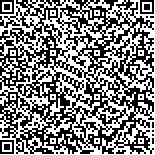下载中心
优秀审稿专家
优秀论文
相关链接
摘要

由于地球系统的复杂性和开放性,遥感信息的地学分析具有模糊和多解的特点。遥感信息源的获取能力有了飞跃的进步,而成象机理研究和地学处理过程相对滞后。该文尝试探讨遥感地学分析中所涉及的时间与空间分辨率的临界值与时/空转换问题。并侧重对快速反应、痕迹分析、历史再现与加入信息网络的讨论,从而提出了有关深度开发和充分利用卫星信息资源,集成规模生产流水线的建议。
One of the Focuses of the remote sensing geo-processing, is pointing at the mutual transformations of spatial/temporal information. Namely, to use time series to detect spatial differentiation while to apply spatial trace to identify the temporal changes of phenomenon. Since the earth system is characterized by opening and complexity, these geo-processing always have fuzzy and multi-solutions. The study on the mechanism of remote sensing information mainly utilizes the statistical methods not as robot as the advanced genealogical and dynamic methods. The study on the ground spectrum,especially on the patterns of high spectrum, sees some bright prospect, and much success has been reached when vegional differentiation is employed. The transfer of the remote sensing information between the lithosphere, hydrosphere and biosphere is indeed more profound than the same procedure in the atmosphere to which much research effort has been directed, because the information is somehow attenuated or amplified when it is applied from physical procedure in lab to natural environment. This is the very knowledge that we should obtain more. Current remote sensing application and technology have been bottlenecked by how to fully utilize the information sources of all sorts and to further the knowledge of geo-process, into such applications. For instance, analyses on the remote sensing data from NOAA AVHRR and Japanese ADEOS-1 have not been developed in a pixel-by-pixel manner, while heavily overlapped ground stations in Southeast Asia cause tremendous waste on such information. Global change and regional sustainable development is and will receive increasing concern from the side of the earth system science, especially at the turn of this century. Satellite remote sensing has outstanding contribution to global change studies in the past. Through a full line of analyses such as remote sensing archaeology, deep underground information transfer, image overlapping, cartographic comparison and fractal analysis, remote sensing is capable of reconstructing the historical procedure of both nature and Chinese civilization of 5.000 years. On the basis of more and more such historical evidence being proven, remote sensing shows convincing capability of serving regional sustainable development. As the Internet spread worldwide and China's information industry rapidly develops, current manipulation on remotesensing information, such as transferring, storing, processing, analyzing and application, is challenged. Around the year 2,000, both airborne and satellite remote sensing image or data will be quali- fled as a multimedia source, completely digitized, flowing on the "infomation super-highway", to serve the society with rapidly captured and updated information. After analyzing the general rule of spatial/temporal transformation of remote sensing information, this paper gives two pieces of advice on the basic steps to develop China's remote sensing technology: ① to independently speed the experiment on small satellites group, and develop more satellite and airborne remote sensing information sources. ② to meet the requirement of information society. China should keep pace with the development of digital telecommunication network at home and broad, integrate assembly lines of remote sensing information, increase the efficiency and effect such information, and lead the nation to a modernized era.

